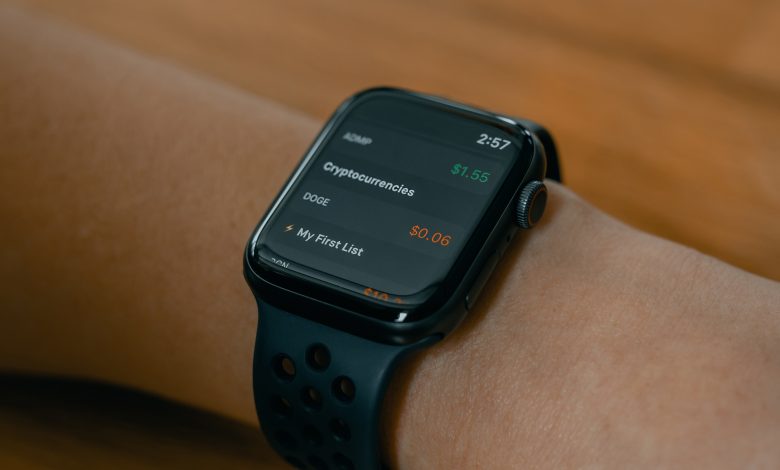
Dogecoin Dogecoin Dogecoin, you might have seen this word trending frequently from past few months. Dogecoin has grown in popularity because of the community surrounding it and it is mainly supported by Elon Musk. Dogecoin is a crypto which is for people. Dogecoin is trending at number 4 depending on market cap. The current buying price of Dogecoin is $0.44 cents (39 INR).
What is Dogecoin about?
Dogecoin is a crypto currency that is P2P open source cryptocurrency. There is always a difference in buying and selling price while buying cryptocurrency, Dogecoin is an inflationary coin because if its unlimited supply. Doge is friendly introduction to the concept of cryptocurrency for the public and had a ‘fun and friendly’ brand image behind it. The face of DOGE was the dog Shiba Inu, who became popular as the DOGE meme. It literally became a ‘meme cryptocurrency’. Doge was just a normal name which nobody in early days gave attention. Who would have believed DOGE would become as valuable as it is today.

The Blockchain Technology of Doge is very solid. When you are buying a Dogecoin at a buy price, at same time there are sellers selling you at a price. In this facts, Buying price of cryptos are always greater than selling price. This buying and selling it is decided based on market demand. You gain profit based on your patience and the time you sell it.
Why exactly is it trending?
It might be trending now, but it was started in 2013, currently speaking 2021 as been a dream run for Doge. Dogecoin started as meme material and was very funny. These memes gained many popularity and people started to share more content related to it. In the wave of time, this joke became serious and people started to invest in Dogecoin. The cryptocurrency has been on a dream run over the last four months and has given more than 8000 per cent returns in 2021 so far.
Elon musk is not the only one who loves the Doge, we have seen Mark cuban, Snoop Dogg and some more celebrities supporting and investing in it. The craze of Doge was on peak during first week of May. May 3 and May 4, the price of Doge had gone up from $0.36 to $0.45 dollars, which is an 18 per cent increase in the price in just 2 days. This hyped was due to Elon Musk. He was going to be hosted on SNL, since Elon loves Doge, it was obvious that he would mention Doge during the show, which might have populated Doge even more. We have witnessed it before, when Elon Musk mentioned Bitcoin in his bio. Bitcoin had gained amazing increase at that time. Though Elon dislikes Bitcoin, he even critized Bitcoin, and made it clear that- He didn’t buy Bitcoin, Tesla did.
Why is it supported Elon Musk?
As mentioned Dogecoin started trending as a meme material and as a joke. We all know how much Elon Musk likes meme. You might have seen Elon sharing many funny logical memes in Twitter. Elon Musk has been posting Dogecoin memes for quite some time. In beginning everyone thought it as a meme but now everyone are serious about it. Elon is pretty straight forward, he loves Dogecoin. He as mentioned Doge as his favourite cryptocurrency and most fun crypto. Special mention, not to forget Elon bought Doge for his son to HODL. The SNL show was held on May 8th. As expected Elon did mention about Doge in the show. Elon mentioned Doge by saying it just a “HUSTLE”, once SNL was over, Dogecoin experienced a decease of price. It got dip from $0.78 cents(58INR) to $0.6 cents (45INR). Currently Doge todays range is between $0.453 – $0.517.
Elon Musk is Dogefather, a big promoter of crypto, we will witness the explode of Dogecoin again, very soon. SpaceX now accpets Dogecoin as payment method. Elon also tweeted if investors wanted Tesla to accept Doge, the official confirmation is not been done yet but we might get to see it in future. In recent SNL, every Doge investors had high hope.
Should you invest in it?
Dogecoin is definitely future of cryptocurrency. Dogecoin is at low price right now and also #4 popular. It will definitely explode again. So investing in Dogecoin is not a bad bet. The ones who are willing to take risk would never give a second thought but could definitely invest at right time. Mark Billy Markus, the co-creator of Dogecoin never took this meme crypto seriously and ended up selling all of his dogecoins in 2015 to buy a Honda Civic car. Today DOGE holds much higher value than the HONDA company.
As been said as Future of Cryptocurrency, we might get to see Tesla making official announcement regarding Doge as payment option. We might get to see Doge touching $1 in coming month. At certain period, there shall be so many Dogecoins in the world that there value will fall. It’s the simple demand-supply logic and predicting its market behaviour is very difficult or nearly impossible.
Conclusion
Cryptocurrencies are notoriously volatile, Elon Musk in his recent tweet, tweeted that while investing in crypto you should always be cautious. Currently Dogecoin in running low, it could be foolish if anyone sell at this time. As mentioned above DOGE is an inflationary coin which as unlimited supply and billions of coins are mined each year, so as the demand increases the supply also increases, which will bring down the prices in long term, so you should be extra cautious while investing in crypto. To those who still believes Doge as fun or meme crypto, kindly dont treat Doge as meme material anymore, its serious now.
Dogecoin Status (source : Coinswitch)
- Market Rank #4
- Market cap 4,70,953Cr. INR
- Circulating Supply 12,957Cr. INR
Although it started as a joke, Dogecoin is a popular cryptocurrency. Together lets make DOGE to the moon.


